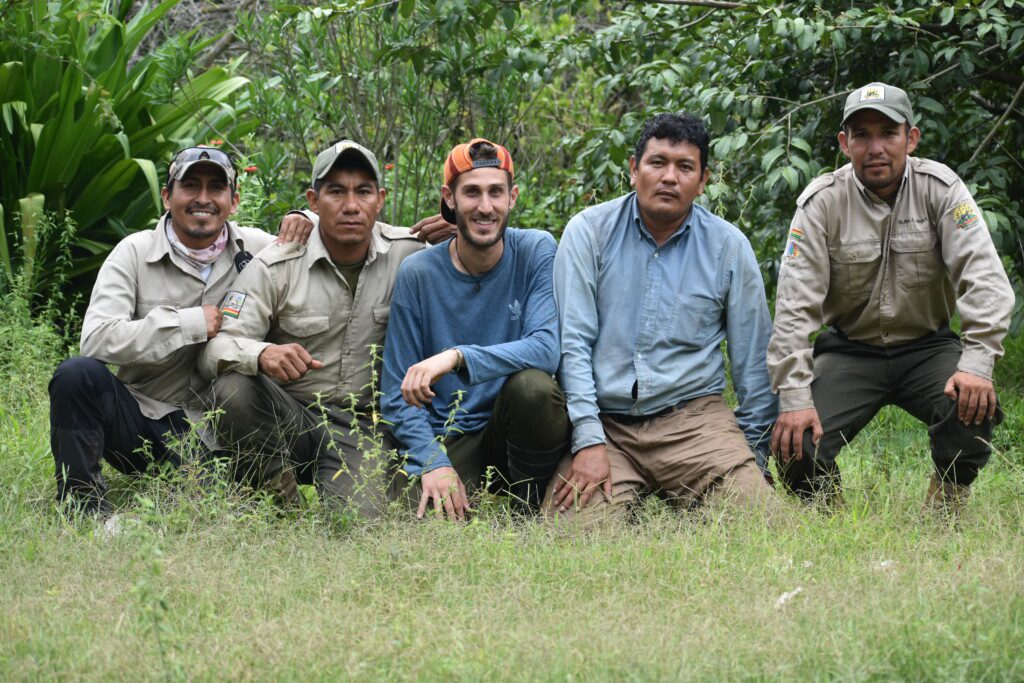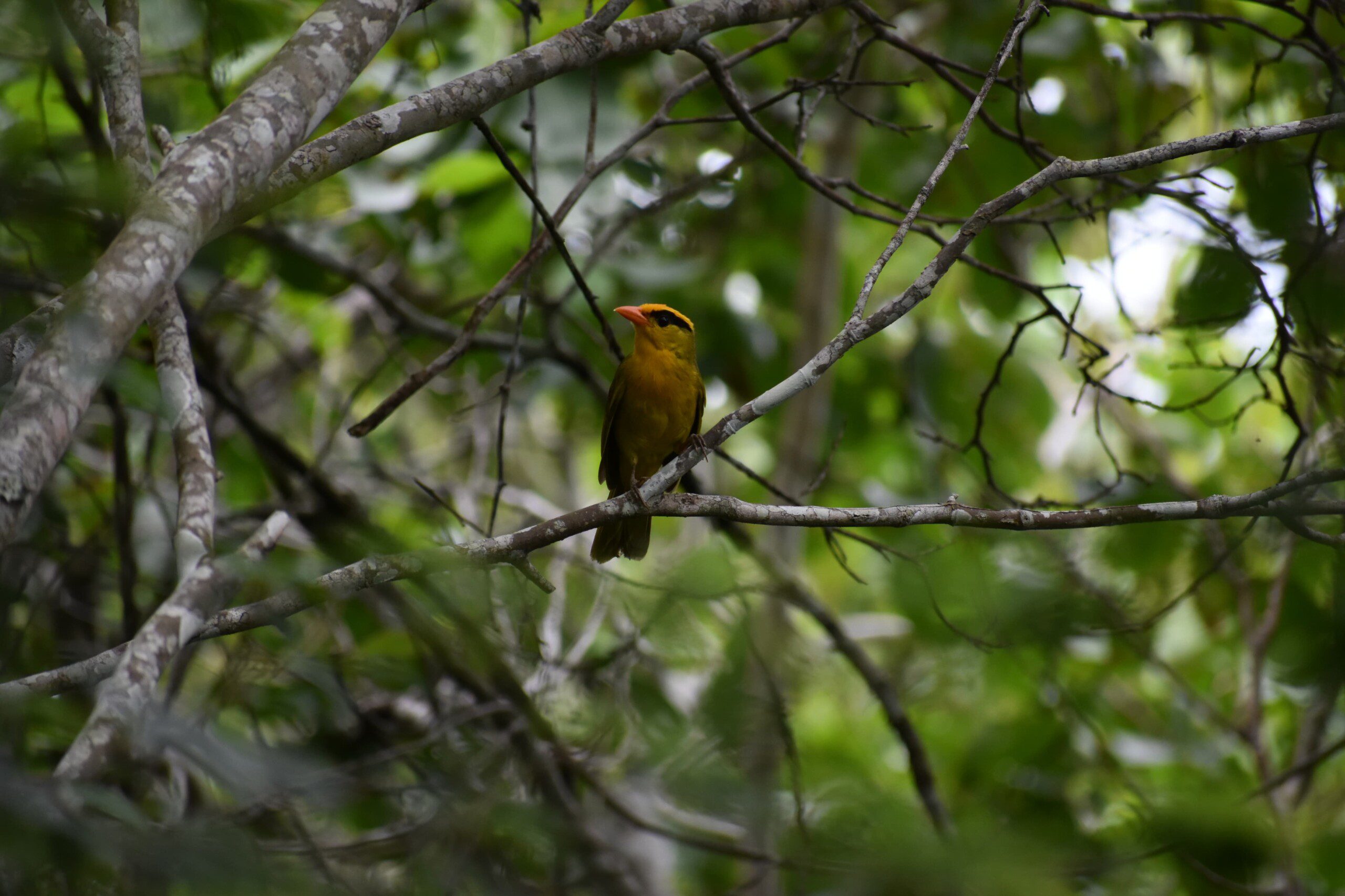Asociación Armonía has conducted in 2023 the first-ever Inti Tanager (Heliothraupis oneilli) population assessment, a bird only recently discovered and described (2021), and expected to breed exclusively in Bolivia. This survey provides preliminary information on the global population size which is estimated to range from 1,360 to 2,859 individuals. This study has also identified a restricted breeding area of approximately 730 square kilometers within the deciduous/semi-deciduous forests of Bolivia, in the Tuichi and Machariapo drainages of the municipality of Apolo, located in the department of La Paz, Bolivia.
Based on the criteria of the IUCN Red List, we propose reclassifying the conservation status of the Inti Tanager from “Least Concern” to “Vulnerable” due to the small population size, limited breeding area (<2,000 km²), and accelerated habitat loss caused by deforestation and mining. This proposed population size and reclassification assumes similar population densities within the Madidi National Park along the Tuichi river. This area will be surveyed in early 2025 to provide a more fine-tuned population estimate.
Over the past five years, approximately 50 km² of forest, equivalent to 6.8% of the breeding area, have been deforested. The situation is exacerbated by the onset of gold mining that started to accelerate in 2021 and local policies promoting pasture expansion for livestock, which could result in a reduction of more than 10% in the number of mature individuals over the next decade.
To prevent the Inti Tanager from falling into the “Endangered” category, Asociación Armonía suggests halting deforestation through environmental education in three key communities, developing new community land management plans that include forest protection, and assessing and promoting sustainable economic alternatives to destructive livestock farming that require deforestation. Additionally, consideration is given to purchasing lands from private owners to establish protected reserves and continuing population studies in unevaluated areas of Madidi National Park.
In 2021, the Inti Tanager, a recently discovered migratory tanager, was formally described to science. It inhabits only the low slopes of the southeastern Andes of Peru and western Bolivia, and reproduces in Bolivia, in deciduous and semi-deciduous forests during the rainy season (October to March). Read here the academic article “A new genus and species of Tanager (Passeriformes, Thraupidae) from the lower Yungas of western Bolivia and southern Peru”
https://academic.oup.com/auk/article/138/4/ukab059/6414067
The population census in 2023 was conducted in the Machariapo Valley over a period of 20 days, from January 22 to February 12 with the tremendous support from Teodoro Camacho(Armonia’s main field biologist), along with Miguel Ángel Aponte (local researcher), and Álex Giménez (field biologist assistant). The team received unvailuable support from Saúl Zambrana López and Diego Antonio Aliaga Pantoja, Madidi National Park rangers. This period coincided with the end of the Inti Tanager’s breeding season.


Photo: Teodoro Camacho, Saúl Zambrana López, Alex Giménez, Miguel Aponte and Diego Antonio Aliaga Pantoja.
As the Inti Tanger is expected to be an endemic breeder to Bolivia and only reproducing within the dry semidesidious forest of the Madidi Integrated Management Natural Area (ANMI) and Madidi National Park, the surveys focussed only on this specific breeding area. Outside the breeding season, birds migrate to Peru and mountainous evergreen forest where they are expected to be highly dispersed through a large area.
This study assessed 128 survey points that were visited twice. A total of 72 Inti Tanagers were registered at 41 survey points (32% of all points) of which 54 were male (75%), 17 female (24%) and 1 juvenile (1%). Study points were distributed between 200 and 500 meters apart (mostly), adapting to the terrain’s topography and accessibility, located along main roads, communal paths, and improvised trails, exploring forested areas away from human presence. These study points are all within the deciduous and semi-deciduous forest of the Machariapo River valley, among the communities of Siphia, Suyo Suyo, Fátima, Taruzani, Baibona, San Pascual, and Tuichi.
During this work, threats such as illegal and legal mining activities, road construction, and government incentives for livestock were identified as contributing to habitat loss. The road between Peru and Apolo, as well as the promotion of livestock, could lead to forest loss approaching 20%. Further detailed research is required to confirm this position, but current data justifies reclassifying the conservation status of the Inti Tanager to “Vulnerable”, as stated in the document. Stay tuned for the 2025 Inti Tanager population census results.
Text: Margarita Palacios and Tjalle Boorsma, Armonía
Photos: Teodoro Camacho, Armonía


